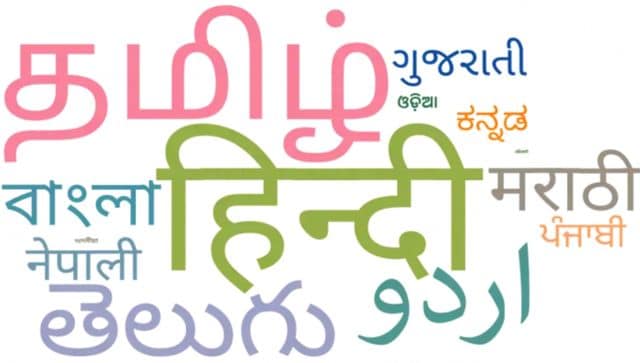Context
-
The Ministry of Home Affairs (MHA) has completed the Mother Tongue Survey of India (MTSI) with field videography of the country’s 576 languages.
What is the MTSI?
- According to the report, the Mother Tongue Survey of India is a project that “surveys the mother tongues, which are returned consistently across two and more Census decades”.
- It also documents the linguistic features of the selected languages.
- The NIC and the National Film Development Corporation (NFDC) will be documenting and preserving the linguistic data of the surveyed mother tongues in audio-video files.
- Video-graphed speech data of Mother Tongues will also be uploaded on the NIC survey for archiving purposes.

Photo Credit: First Post
How many “mother tongues” does India have, and what is spoken the most?
- As per an analysis of 2011 linguistic census data in 2018, more than 19,500 languages or dialects are spoken in India as mother tongues.
- The category “mother tongue” is a designation provided by the respondent, but it need not be identical with the actual linguistic medium.
- After subjecting the 19,569 returns to linguistic scrutiny, edit and rationalisation, they were grouped into 121 mother tongues, the Registrar General and Census Commissioner, India, had earlier said.
- According to the 2011 linguistic census,
- Hindi is the most widely spoken mother tongue, with 52.8 crore people or 43.6 per cent of the population declaring it as the mother tongue.
- The next highest is Bengali, mother tongue for 9.7 crore individuals, and accounting for 8 per cent of the population.
Where does the mother tongue feature in the education of children?
- The new National Curriculum Framework (NCF) for the foundational stages of education, launched by Education Minister, has recommended that mother tongue should be the primary medium of instruction in schools for children up to eight years of age.
- The new NCF, which deals with pre-school and classes I-II, emphasises the virtues of the mother tongue as the primary medium of instruction, saying that by the time children join pre-school, they acquire significant competence in the “home language”.
- According to the NCF, evidence from research confirms the importance of teaching children in their mother tongue during the foundational years and beyond.
- “Since children learn concepts most rapidly and deeply in their home language, the primary medium of instruction would optimally be the child’s home language/ mother tongue/ familiar language in the Foundational Stage.
What is the status of the population census?
- The forthcoming decennial population census will be the 16th since the first exercise was conducted in 1872.
- It will be the eighth census since independence.
- The census was supposed to take place in 2021, but was postponed due to the outbreak of the Covid-19 pandemic.
- To ensure efficient processing and quick release of data, the Home Ministry has said that it has adopted some new initiatives, which include digital data processing and the use of geospatial technology.
- According to the report, pre-census mapping activities like preparation and updation of maps that show administrative units will be carried out. Census results will be disseminated via web-based interactive maps.
Source: IE
Visit Abhiyan PEDIA (One of the Most Followed / Recommended) for UPSC Revisions: Click Here
IAS Abhiyan is now on Telegram: Click on the Below link to Join our Channels to stay Updated
IAS Abhiyan Official: Click Here to Join
For UPSC Mains Value Edition (Facts, Quotes, Best Practices, Case Studies): Click Here to Join
